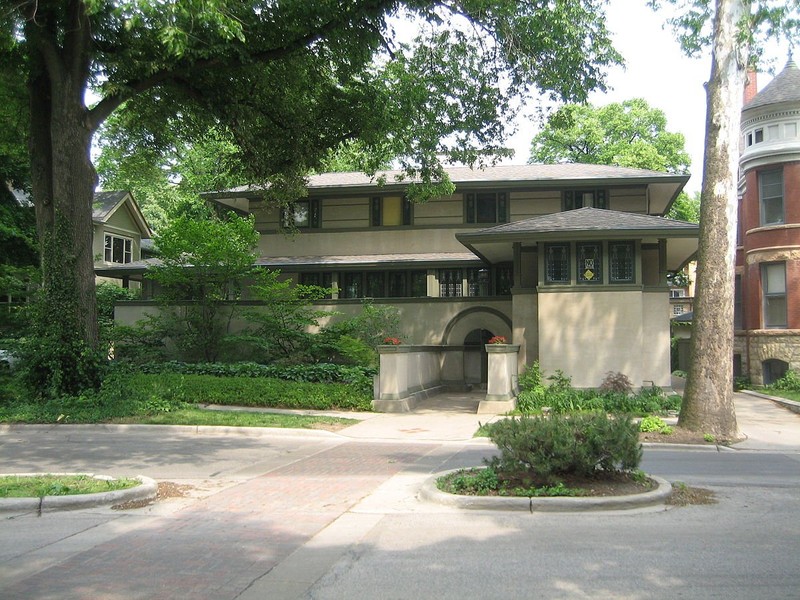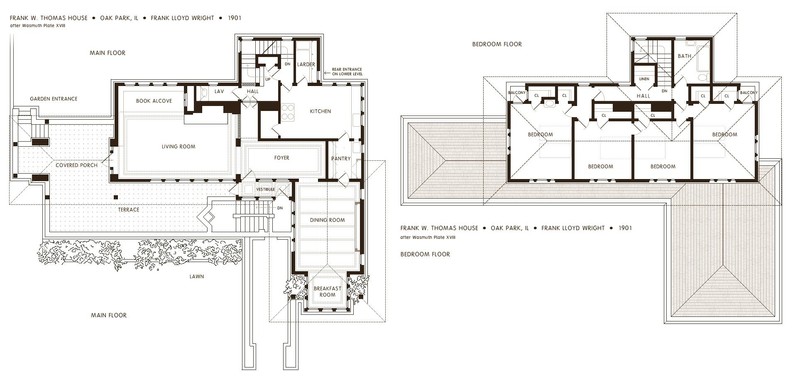Frank W. Thomas House
Introduction
Text-to-speech Audio
Images
Frank Thomas House facade

Floor plans of the Frank Thomas House

Backstory and Context
Text-to-speech Audio
By the turn of the 20th-century, Frank Lloyd Wright reached his peak Prairie style design phase, meeting his own definition and interpretation of the architectural style. His first mature Prairie design became the Frank W. Thomas House at 210 Forest Avenue in the Chicago suburb of Oak Park. James Rogers, an Oak Park resident and successful grain merchant, commissioned Wright to construct the house as a wedding gift for his daughter Sue and husband Frank W. Thomas. All individuals involved contributed to the planning and design of the house.
Completed in 1901, the Frank Thomas House became a unique fixture in Oak Park. The combination of the house’s features is what sets it apart from Wright’s earlier works and designates it as his first fully- realized Prairie style house. Aside from the standard horizontal emphasis, low-pitched roof, overhanging eaves, casement windows, and stucco exterior, the two-story Thomas House possesses no basement which became a defining feature of this architectural style. Instead, the service rooms were all situated on the ground floor while the “main” floor of the house was placed on the second story. Neighbors and other neighborhood residents came to call the Thomas House “the Harem” due to the front elevation of the house possessing an arched walkway behind which is found a hidden entrance stair. In 1924, fellow Prairie style architects Tallmage and Watson remodeled the house though no renderings of the designs exist.
The Frank W. Thomas House was added to the National Register of Historic Places on September 14, 1972.
Sources
Bell, Robert A. National Register of Historic Places Inventory - Nomination Form. Illinois Historic Preservation Agency. September 14, 1972. December 19, 2018. http://gis.hpa.state.il.us/pdfs/200508.pdf.
